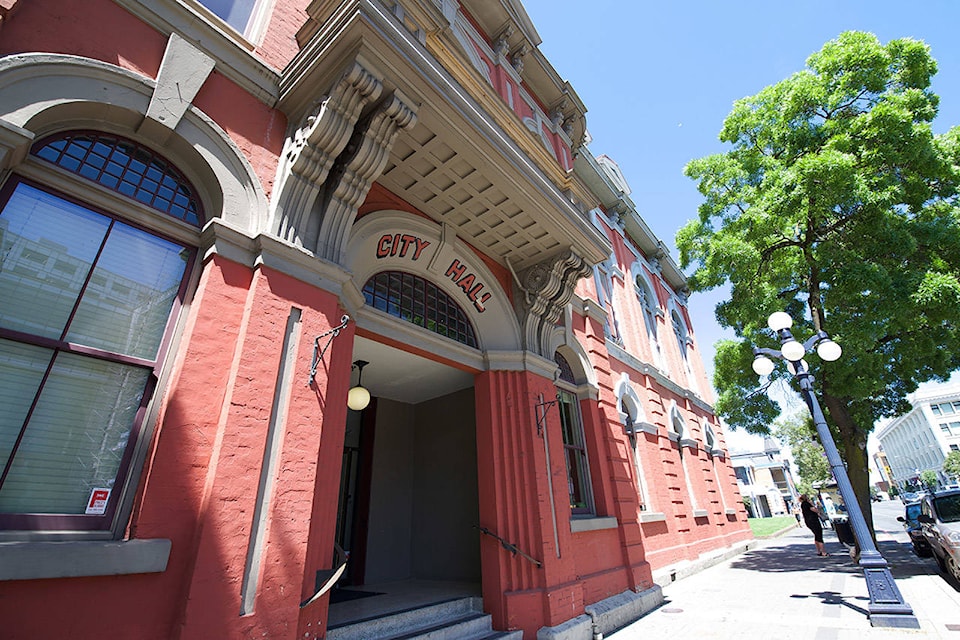Despite City Staff recommendations, Victoria City Council voted to put the remaining steel from the Johnson Street Bridge legacy rails forward for public art use.
City director of engineering, Fraser Work, had recommended differently. He and City staff wanted the steel put up for public bid for any use with an “as is, where is” caveat. The steel was dismantled from the Johnson Street Rail Bridge in 2011, and a small portion of it was retained for possible future use in a public art display. Since then it’s been sitting in the City’s Public Works Yard.
The steel presents a hazardous problem: it’s coated in toxic lead paint, something that was standard practice up until the 80’s. Works and City staff said they wanted to have as “fair and transparent” a process as possible to whoever ended up buying it.
RELATED: BRIDGING THE GAP: A chronology of the new Johnson Street Bridge project
Coun. Jeremy Loveday asked why staff didn’t want the steel to be set aside for it’s original purpose: public art.
City Solicitor Tom Zworski cited liability problems.
“The difficulty with city dictating or being part of the decision on how the steel is used, is that the city then retains a certain degree of responsibility,” Zworski said.” It would require remediation of lead paint on steel, but also ensuring it’s structurally suitable for the purpose.”
| Remnants of the Johnson Street Rail Bridge have been in the City Works Yard since 2011. The steel is coated in toxic lead paint, and City staff wanted it sold with an "as is, where is" policy. (City of Victoria) |
Work said that if City staff were to remove the paint it would cost around $15,000.
“$15,000 is an estimate on just the rough order cost to do the work,” Work said. “It doesn’t include structural assessment, or how it will affect other projects and their timelines.”
In the 2018 budget the City set aside $250,000 for public art, earmarked specifically for the two artists in residence. Currently one of the artists, Luke Ramsey, has a large claim on the contingency for the use of an upcoming orca piece constructed out of metal surfboards, intended for the triangular meridian near the Janion building.
RELATED: Proposed public art installation sparks debate in Victoria
When asked just how much of the $250,000 would be used for this instillation, director of finance Susanne Thomson said that the total bill had not come in yet, so she wasn’t sure if the entire contingency would be used or not.
Coun. Ben Isitt put forward an idea to try to raise money for the remediation of the steel, suggesting that portions of the bridge could be sold to people seeking a memento of the old bridge.
“I think people would be happy having [a piece] the size of a BB pellet,” he said. “They would probably bay $5-10 for a gram of steel…. and I would presume we’d get applications in the hundreds.”
Victoria Mayor Lisa Helps disagreed with the idea, saying when the new bridge opened she’d expected 500 people, and that 10,000 showed up.
“Probably thousands would want a piece, and then we chop it all up and there’d be none left for public art,” Helps said, adding that if any was left after an art installation was put up the idea could be considered.
In the end, Coun. Loveday put forward a motion to put the steel forward for purchase only for the use of public art.
“My fear is that if we put this out to the tender, a scrap metal company may have money to bid right now, and an artist may not,” he said.
Council agreed, adding amendments that the intended use be for the public realm, and that the art piece stay in the City of Victoria.
“I know it would be easier for staff to dispose of the steel in the regular procurement process, but there’s too much public interest,” Helps said. “Staff outlines very clearly financial implications and risk implications, but our job is to mix information from staff with that from the community.”
Helps noted that, since the steel had been in the yard since 2011, this wasn’t a time-sensitive issue and could be something to consider for the 2019 budget.
